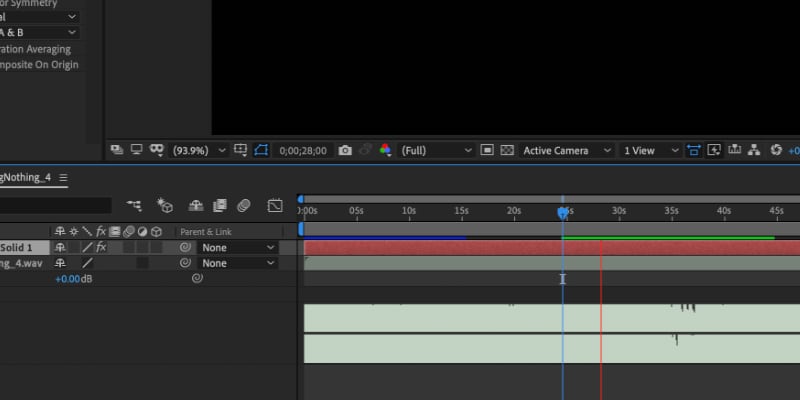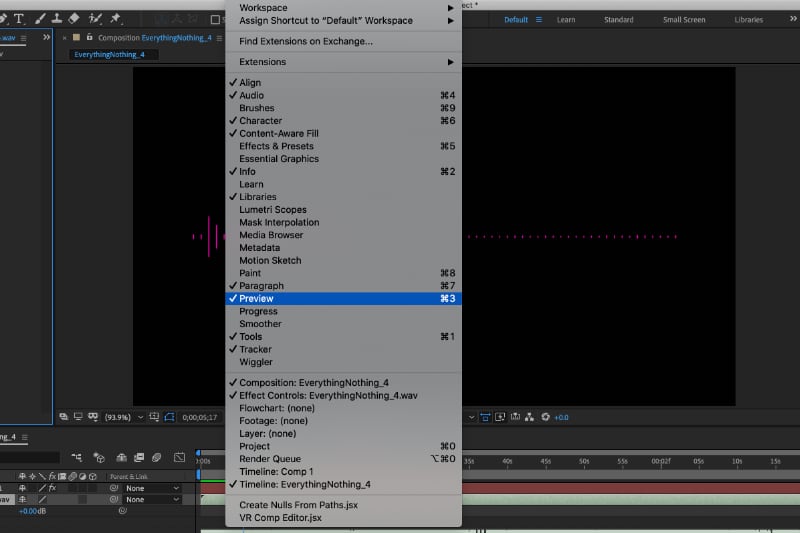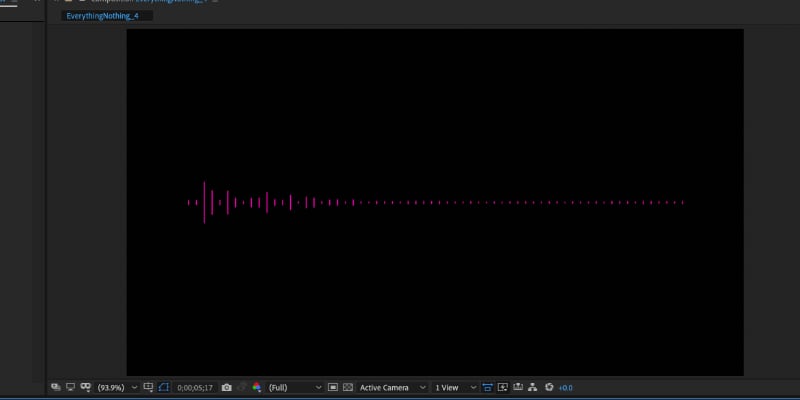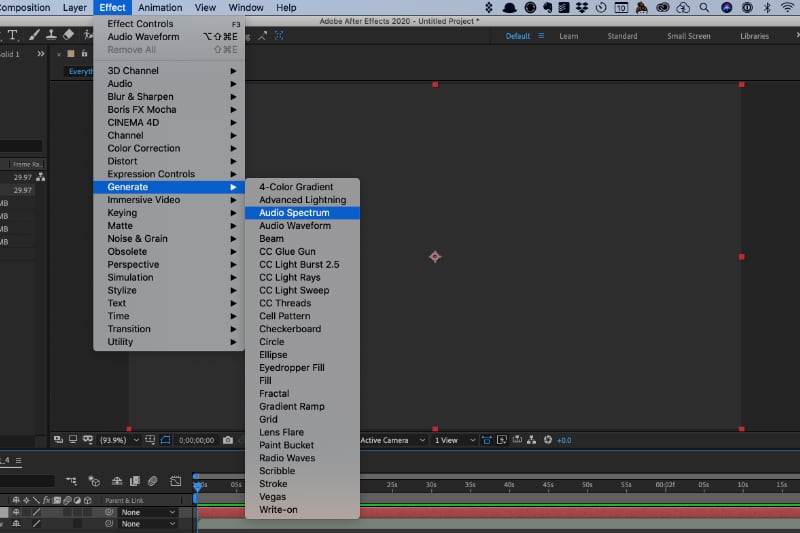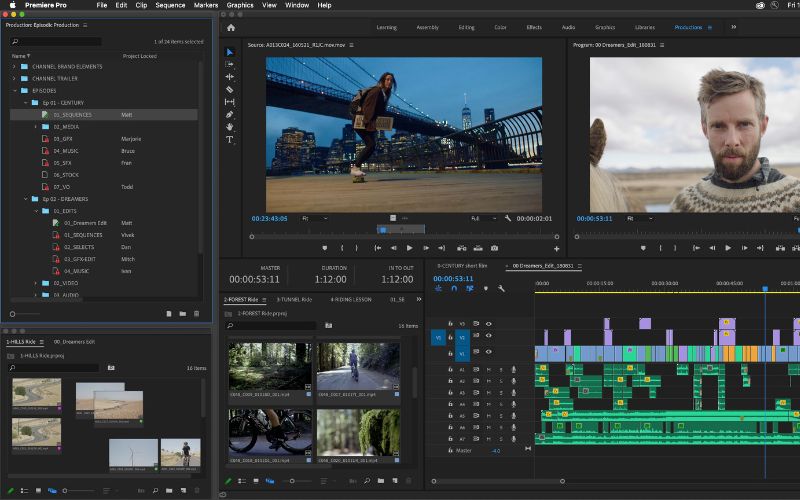Adobe After Effects is the tool of choice for video pros looking to create visual effects without a ton of manual work. That said, remember that your viewers’ ears are just as important as their eyeballs when it comes to catching and holding their attention. If your watch time is dipping, using these quick and easy tips to edit audio in After Effects could be the change that makes your engagement skyrocket.
You can even use After Effects to create visual effects based just on audio, but first, you need to know the basics.
1. See what you need to see
Because of its video focus, After Effects doesn’t always show you all the information you need for your audio. If you only want to see audio levels for a given clip, press the L key. This lets you make sure you’re not pushing audio too loud and causing clipping.
If you want to get hands-on with the waveform, you can do that too. Press LL, and you’ll see just the waveform. This can be handy for precisely lining up sound effects with visual elements.
2. Preview early, preview often
If you’re used to standard video editors, you might have gotten used to seeing every edit reflected almost immediately. Because of the heavy-duty nature of After Effects, that often isn’t the case. This means you’ll need to get used to frequently previewing.
Usually the Preview panel will already be open, but if it isn’t, you can enable it by going to the Window menu, then choosing Preview. To start playing a preview of what you’ve put together so far using the default options, press the Spacebar. To force the preview to include audio, press the 0 key.
Sometimes, audio is the only thing you want to preview. To avoid unnecessarily previewing video as well, you can press the . key, which will start a preview with only the audio.
3. Use music for emphasis
When you think of music for your YouTube videos, you probably think of background music from ‘royalty-free’ music sites which provide unknown songs that won’t get a claim on YouTube.
I have good news for you, the days of generic ‘royalty-free’ music are now over. Music licensing platform, Lickd, is here to save the day. The Lickd platform allows video creators to use commercial music from famous artists without getting hit with copyright claims.
You don’t have to worry about musicians getting worked over either, because Lickd makes sure they get paid fairly. It’s a win for everyone. If you sign-up to the service, you’ll get 25% off your first track – a great chance to check out the library and practice how you edit audio in After Effects to get your perfect video soundtrack.
4. Can you see audio? Yes you can
If audio is one of the most important parts of your video, maybe you should make sure your viewers can see it too. Creating an audio visualizer in After Effects is way easier than you might think.
First, you’ll want to make sure that you have at least one music file in your composition. Now create a new Composition by right-clicking on a file and choosing New Comp From Selection. Now create a new layer by going to Layer > New > Solid, then hitting OK.
Select your new layer, then go to Effect > Generate and select Audio Spectrum. In the Effect Controls window, change the Audio Layer to the music file you want the visualizer to use. From here, you can tweak the results or export this to a video in Premiere. You can do a similar effect by choosing Audio Waveform instead of Audio.
5. Think outside the box
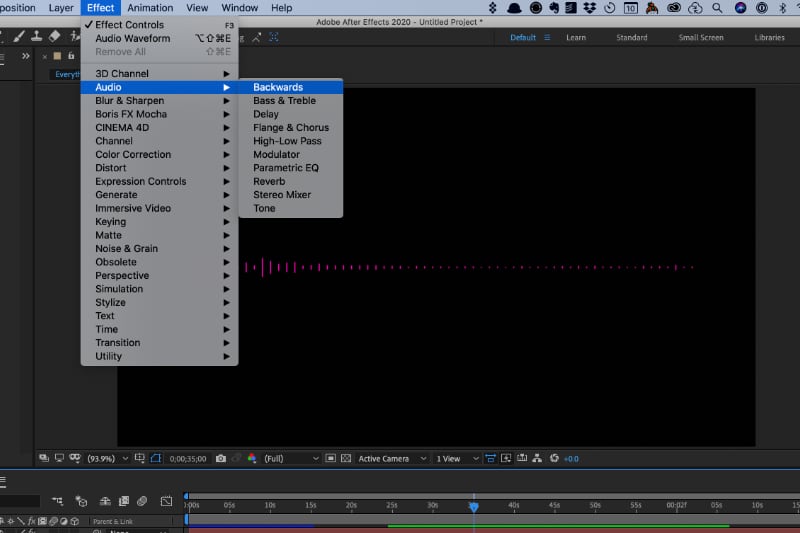
Nothing catches a viewer’s attention like something they’ve never seen or heard before. With so many people creating so many videos every day, that’s getting harder and harder to do. That’s why you need to get creative.
But, you don’t need to reinvent the wheel, especially when you edit audio in After Effects. Reversing audio can create otherworldly sounds, while cutting bass can make it sound like your track’s playing on an old-fashioned radio. Boost the bass and cut the treble to make it sound like your sounds are on the other side of a wall.
These are just a few basic ideas to get you started. Use your imagination and the tools at your disposal and see what you can make happen. If nothing else, you’ll have fun. If you get lucky, you might create the new trick everyone starts using in their videos.
After Effects is a complex tool and there’s loads more tips and tricks to learn to make it easier to use. To find out more, make sure to keep an eye on the Lickd audio editing tutorial channel.
So now you know how to edit audio in After Effects, but.. what is Lickd?
For more creator top tips, don’t forget to check out other articles on the blog. Also if you’re looking for music for your YouTube videos (who doesn’t use music?) you’ll want to hear this… So you know how you can’t use popular, recognizable music in your YouTube videos without getting a copyright claim? Well, that’s not true anymore! Lickd has made it their personal mission to make popular music available for creators to license and use! That means you can get songs from the likes of Dua Lipa, Lewis Capaldi, Sia, Dolly Parton, XXXTentacion and many more. What’s more, you get 25% off your first track when you sign up!

